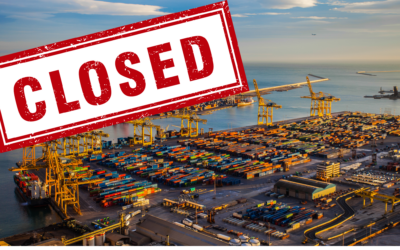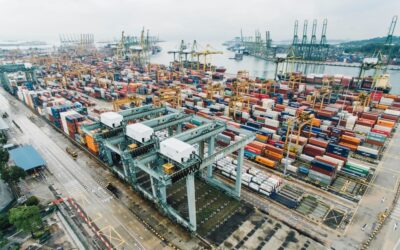On June 2, 2023, several ports in California shut down when union workers walked out of the job—or failed to report to work at all. When West Coast ports close, it can portend future issues, so this is an area of concern. Was it just posturing to get attention? Or does the strike mean there will be additional challenges with port shutdowns in the coming months?
Let’s discuss what happened, the potential implications for global shipping, and how your business can navigate this challenging time.
The Situation: What Happened?
Members of the International Longshore and Warehouse Union (ILWU) have been working at ports along the West Coast, from California to Washington, without a contract since July 2022. Throughout the past year, the union has been in talks with the Pacific Maritime Association (PMA), the group that represents the interests of ocean carriers and terminal operators.
The abrupt port closure on June 2 is reminiscent of a similar incident that occurred in April of this year, both of which caused disruptions to the global supply chain. The affected ports included Los Angeles, Long Beach, and Oakland, all of which are vital to import and export of goods to and from the US on the West Coast.
Unfortunately, the breakdown of communication occurred just as the West Coast ports were beginning to bounce back after a loss of activity that had been shifted to the East Coast due to fears of just this situation occurring.
The Forecast: Potential Implications When West Coast Ports Close
There are several potentially negative outcomes when West Coast ports close. These are the same we’ve been covering since COVID-19 regulations shut down ports and the global supply chain was disrupted. Some issues that are likely to occur due to closures include:
Delays and Backlogs
When West Coast ports close, this inevitably leads to significant delays and backlogs in shipping operations. Goods pile up at the closed terminals, cargo ships are unable to get to port to load or unload containers, and trucks can’t transport their goods, all of which create challenges not just at the ports themselves but also ripple effects throughout the supply chain. The ultimate outcome is disruptions in delivery schedules, lack of inventory where and when it’s expected, and eventual loss of sales—with the potential to affect the global economy.
Increased Costs
Without a steady flow of goods at the ports, shipping costs can increase. Some shippers will opt to choose alternate routes or modes of transportation, leading to a boost in East Coast traffic, or choosing air transport rather than via waterways. It is much more expensive to fly goods to their destinations, as Peloton realized during the pandemic. And rerouting to ports along the East Coast results not only in cost increases but shipping delays.
Supply Chain Disruptions
In the world of shipping, when one aspect changes, it is not an isolated situation. Instead, when West Coast ports close, the implications are far reaching within the supply chain. Because many manufacturers and retailers rely on goods from Asia, if they cannot receive them in a timely manner, that can result in delays in production and inventory shortages. Even when shipments are redirected to open ports, delays still occur.
Predictions: Navigating the Future Amidst Port Closures
While we feel the June walkout, like the one that preceded it, is not likely to lead to long-term closures, there are still concerns about the impact of having West Coast ports close. Ways you can stay ahead of the challenges include, of course, working with a freight forwarder. Additionally, you can:
Diversify Shipping Routes
Instead of relying solely on West Coast ports, we recommend businesses consider diversifying their shipping routes. Some companies are already doing this, rerouting not just to the East Coast but also to the Panama Canal and Gulf of Mexico.
Plan Ahead
Staying ahead of the game is key to success in today’s global shipping industry. Talk with a freight forwarder to review and revise your supply chain strategies in light of potential delays. It’s important to share your plans with suppliers, customers, and logistics partners to manage expectations and minimize disruptions.
Explore Alternate Transportation Options
When West Coast ports close, it backs up trucks and rails that were depending on timely ocean liners. However, these options can also help navigate around closed ports by leveraging trains and trucks from nearby unaffected ports. Always keep alternative routes in mind when planning imports and exports.
Proactively Manage Inventory
Closed ports mean delays in receiving valuable inventory. Some companies are choosing to keep a stock of their critical components to ensure they are prepared for potential supply chain distributions. While this is not an option for all businesses—especially those that deal in perishables—it may be a viable alternative for others. Even if you cannot keep extra perishable items, are there other things in your inventory that are vital to success? Anything you can do to insulate your business is a good choice.
Be Prepared When West Coast Ports Close
Unexpected and sudden closures of ports create significant challenges for businesses that rely on global shipping routes. Working with a freight forwarder can help you navigate these and other obstacles to importing and exporting goods. Staying informed and working closely with freight forwarders and logistics partners will be vital to successfully adapt to the evolving situation. Together, we can overcome these obstacles and maintain the flow of global trade.
Learn more about Cyclone Shipping and how we can help.




